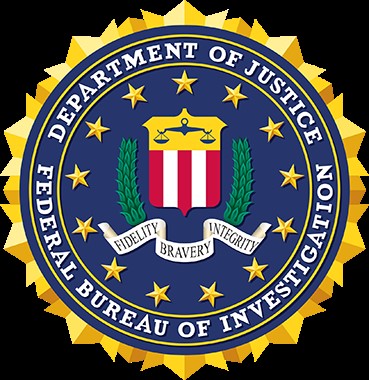In 2023, the Federal Bureau of Investigation (FBI) faced a growing and evolving threat spectrum—from an uptick in violent and bias-motivated crimes to increasingly elaborate cyberattacks to a rise in more potent drugs like fentanyl. A look back over the past 12 months shows the diversity of law enforcement and intelligence challenges facing the 115-year-old Bureau.
While the year opened with the FBI and our international partners dismantling an advanced ransomware network that cost victims more than $100 million, the Bureau’s 38,000 agents, analysts, and professional staff remained fully focused on working with all our partner agencies to carry out the FBI’s broad mission to protect Americans and uphold the Constitution.
“The men and women of the FBI work tirelessly every day to protect the American people from what is really a staggering array of threats,” Director Christopher Wray said in remarks to a Congressional panel in July. “And we don’t do that work alone.”
To achieve its mission, the Bureau last year relied on more than 750 FBI-led task forces composed of more than 6,000 state and local task force officers. Moreover, the public continues to be the FBI’s force multiplier in exposing potential crime and terror threats, having submitted more than 1.4 million tips to the Bureau’s National Threat Operations Center (tips.fbi.gov or 1-800-CAll-FBI), including 1,479 “threat-to-life” leads related to school-shooting threats.
Here’s a look at how the FBI addressed some of its most significant priorities and challenges in 2023:
Cybercrime
FBI-led operations dismantled 18 criminal cyber operations—and disrupted another 285—in the fiscal year that ended September 30. More than $200 million in assets were seized or forfeited in operations that netted 202 arrests and 139 convictions. The figures themselves, however, don’t fully illustrate the breadth of the cyber takedowns, which occurred nearly every month of the past year and revealed tens of thousands of victims worldwide. Some of the biggest cases were:
- Hive Network: The Hive ransomware group targeted more than 1,500 victims in over 80 countries around the world, including hospitals, school districts, financial firms, and critical infrastructure. The FBI penetrated Hive’s computer networks, captured its decryption keys, and offered them to victims worldwide, preventing victims from having to pay $130 million in ransom. Details
- Qakbot: In one of the largest ever actions against a botnet (a network of compromised computers), the FBI gained lawful access to Qakbot’s infrastructure and identified over 700,000 infected computers worldwide—including more than 200,000 in the U.S. “The FBI neutralized this far-reaching criminal supply chain, cutting it off at the knees,” said Director Wray. Details
- Genesis Market: Disrupted the dark web marketplace that offered access to data stolen from over 1.5 million compromised computers around the world, containing over 80 million account access credentials. Market users were located all over the world; investigators worked to identify the most prolific users, which resulted in hundreds of leads being sent to FBI field offices and oversees partners. The disruption, announced in April, involved 45 of the FBI’s 56 field offices. Details
- Snake Malware Network: Neutralized a global peer-to-peer network of computers compromised by malware called Snake. For nearly 20 years, a unit within the Federal Security Service of the Russian Federation has used versions of the Snake malware to steal sensitive documents from hundreds of computer systems in at least 50 countries. Details
Violent Crime
The FBI’s top priorities are national security threats, but the Bureau plays a key role in combating violent crime in big cities and local communities across the United States. The threats vary widely, from bank robberies and art crime to human trafficking, gang violence, crimes against children, and drug trafficking.
The Bureau’s Criminal Division this year accounted for more than 18,000 arrests and almost 10,000 indictments in violent criminal cases. The myriad FBI units targeting suspected criminals disrupted more than 2,500 operations and dismantled another 314. They located 2,401 children in the 12-month period that ended in September and were involved in more than 12,000 drug seizures. “To truly appreciate the impact the FBI and our partners are having,” Director Wray has said, “you’ve got to look at the cases.”
Here’s a look at just a few significant cases and accomplishments:
- Operation Ghost Busted: 76 individuals were charged with involvement in a drug trafficking operation that distributed large amounts of high-grade methamphetamine, along with fentanyl, heroin, and alprazolam (Xanax) in the greater Glynn County area of Georgia. Details
- Operation SpecTor: This coordinated operation spanning nine countries and dozens of law enforcement agencies across the U.S., Europe, and South America targeted darknet drug markets. Efforts resulted in seizures of more than $50 million in cash and virtual currency, 1,875 pounds of potentially lethal pills and other drugs, and 288 arrests. Details
- Operation Cross Country: The FBI, working with partners, identified and located 200 victims of sex trafficking during a two-week nationwide enforcement campaign in July. The operation also led to identification or arrest of 126 suspects of child sexual exploitation and human trafficking offenses and 68 suspects of trafficking were identified or arrested. Also located were 59 minor victims of child sex trafficking and child sexual exploitation offenses and 59 actively missing children. Details
- January 6: In what the Department of Justice has called the FBI’s largest ever investigation, the Bureau continues to seek the public’s assistance in in identifying individuals who made unlawful entry into the U.S. Capitol on January 6, 2021. In the 34 months since the attack on the Capitol, more than 1,200 individuals have been charged in nearly all 50 states for crimes related to the breach of the U.S. Capitol, including more than 400 individuals charged with assaulting or impeding law enforcement. Details
- Transnational Organized Crime: The FBI is focused on the cartels trafficking narcotics across the border. The FBI has 328 pending investigations linked to cartel leadership; 78 of those are along the southern border.
Multiple field offices conducted operations this year targeting gangs or criminal networks. In July, for example, an FBI-led joint operation targeting violent criminals in Tucson, Arizona, resulted in 88 arrests. A month earlier, in Erie, Pennsylvania, an FBI-led Safe Streets task force targeted a local drug gang. Also last summer, an FBI-led operation in Dallas seized more than 540 grams of cocaine, more than 1,100 grams of methamphetamine, and more than seven grams of fentanyl, along with nine firearms and over $10,000 in cash.
https://www.youtube-nocookie.com/embed/Fq0weEpCic0?
The FBI, along with the Dallas Police Department and the Dallas County Sheriff’s Office, conducted an early morning operation on July 27, 2023, that resulted in 15 arrests of suspected drug gang members and violent criminals. This footage is from operations at multiple locations.
Transcript / Visit Video Source
Counterterrorism
Protecting Americans from the threat of terrorism remains the FBI’s top priority. In a year when the terrorism threat was already elevated, Director Wray told Congress in November, the ongoing war in the Middle East has raised the threat of an attack against Americans in the United States to a whole other level.
“Our most immediate concern is that individuals or small groups will draw twisted inspiration from the events in the Middle East to carry out attacks here at home,” Director Wray said. The FBI’s counterterrorism operational tempo remains high across the board—for international terrorism, state-sponsored terrorism, and domestic terrorism simultaneously. ISIS continues to pose a threat. Al Qaeda and its global affiliates remain committed to attacking U.S. and Western interests. Meanwhile, domestic violent extremists—motived by race or ethnicity or anti-government and anti-authority biases—are the Bureau’s top domestic terrorism threat.
In remarks before a Senate panel on December 5, Director Wray described the terrorism threat: “What I would say that is unique about the environment that we’re in right now, in my career,” he said, “is that while there may have been times over the years where individual threats could have been higher here or there than where they might be right now, I’ve never seen a time where all the threats or so many of the threats are all elevated all at exactly the same time.”
Counterintelligence
An FBI-led gathering of intelligence agency chiefs from the U.S., United Kingdom, Canada, Australia, and New Zealand—a coalition of nations called the Five Eyes—convened in October to shed light on the threat of innovation theft—especially by China—and to help researchers and industry players prevent their intellectual property and technology from being stolen or exploited.

(From left to right), Australian Security Intelligence Organisation Director-General Mike Burgess; Canadian Security Intelligence Service Director David Vigneault; FBI Director Christopher Wray; New Zealand Security Intelligence Service Director-General of Security and Chief Executive Andrew Hampton; and MI5 Director General Ken McCallum pose for a group photo ahead of the Emerging Technology and Securing Innovation Summit in California’s Silicon Valley on October 16, 2023.
Indeed, Director Wray has said the Bureau is aggressively working to protect America’s economic security from China’s relentless efforts, with around 2,000 active investigations across all 56 FBI field offices. The first-time in-person gathering was perhaps the most visible of the Bureau’s intelligence efforts this year. Intelligence collection and counterintelligence (preventing others from spying) generally occur in the shadows. But there were some examples of cases bubbling into public view.
Here are a few:
- Chinese Balloon: In early February, a high-altitude balloon belonging to the People’s Republic of China (PRC) was identified drifting over the continental U.S. and shot down by the U.S. military off the coast of South Carolina. The FBI’s visible role, detailed during a February 9 news briefing, included collecting material from the fallen balloon, drawing in the Bureau’s Operational Technology and Laboratory divisions, as well as field office personnel trained in evidence collection. Details
- Operation Fox Hunt: A federal jury in Brooklyn returned guilty verdicts against three defendants charged with acting and conspiring to act in the U.S. as illegal agents of the PRC. “The FBI and our law enforcement partners are watching, and we are taking action to stop the stalking, threatening, and repressing of dissidents,” said James E. Dennehy, special agent in charge of the Bureau’s Newark Field Office. Details
- Jack Teixeira: The 21-year-old member of the U.S. Air National Guard stationed in Massachusetts was indicted in Boston for allegedly retaining and transmitting classified national defense information on a social media platform beginning in or around 2022 and continuing until his arrest in April. The Bureau’s Boston and Washington field offices are investigating. Details
- Assassination Plot: A federal court in New York in January unsealed murder-for-hire and money laundering charges against three members of an Eastern European criminal organization for plotting the murder of a U.S. citizen who has been targeted by the Government of Iran for speaking out against the regime’s human rights abuses. Details
- Transnational Repression: Charges were unsealed in New York in April charging 44 people with various crimes related to efforts by the national police of the PRC to harass Chinese nationals residing in the U.S. In two of their schemes, defendants created and used fake social media accounts to harass and intimidate PRC dissidents residing abroad. The defendants are believed to reside in China or elsewhere in Asia and remain at large. Details
More counterintelligence news
Information Sharing
The FBI’s Criminal Justice Information Services Division, or CJIS, is a high-tech hub that provides a range of state of-the-art tools and services to law enforcement, national security and intelligence community partners, and the general public.

FBI’s Criminal Justice Information Services Division, or CJIS, is a high-tech hub in the hills of West Virginia that provides a range of state of-the-art tools and services to law enforcement, national security and intelligence community partners, and the general public.
Those tools include the National Threat Operations Center (NTOC), which manages tips, the National Instant Criminal Background Check System (NICS), the National Crime Information Center (NCIC), and Biometric Identification Services, to name just a few. The division also manages the Uniform Crime Reporting system, which collects and compiles crime data statistics from participating agencies.
Here’s a look at some of what CJIS accomplished in the 12-month period that ended September 30, 2023:
- Calls received at 1-800-CALL-FBI: 639,090
- Tips received via tips.fbi.gov: 700,798
- Threat-to-life leads received: 7,613 (an average of 21 per day)
- NICS transactions (gun background check): 10,075,439
- NCIC daily transactions (police checking backgrounds): 10,964,764 (average response time is 0.0076 seconds)
- Fingerprints (civil and criminal) received/processed daily on average to repository: 202,991 (average)
- Iris images in NGI Iris Service: 3,150,878 (920,625 iris images added in most recent fiscal year)
Laboratory Division
Whether it’s examining DNA or fingerprints left at a crime scene or linking exploded bomb fragments to terrorists, the FBI Laboratory’s world-class scientists use scientific rigor to solve cases and prevent crime and terrorism.

The FBI Laboratory in Quantico, VA, conducts scientific examinations of evidence, free of charge, for any federal, state, and/or local law enforcement organization in the U.S.
In November, the Laboratory celebrated the 25th anniversary of the National DNA Index System (NDIS). To date, NDIS contains over 23 million DNA profiles and has aided over 660,000 law enforcement investigations.
CODIS (Combined DNA Index System), the FBI-owned software that manages NDIS, is currently used by 204 federal, state, and local domestic laboratories across the U.S., and 125 more labs in 61 countries around the world.
Here’s a glance at some of the Laboratory Division’s highlights form 2023:
- Received over 4,600 submissions of evidence for approximately 2,800 corresponding cases in 2023.
- Participated in 80 operational deployments, two humanitarian deployments (to include victim identification from the Maui fires), and 22 Department of Defense fingerprints identification assists.
- Nearly 1.4 million DNA samples were entered into the National DNA Database nationwide. The Laboratory Division itself contributed nearly 678,000 DNA samples to NDIS in 2023.
FISA Section 702
The Bureau this year continued to underscore the need for reauthorization of Section 702 of the Foreign Intelligence Surveillance Act, which expires at the end of the year if not renewed.Section 702 permits the government to conduct targeted surveillance of foreign persons located outside the U.S. to acquire foreign intelligence information. Section 702 only permits the targeting of non-U.S. persons who are reasonably believed to be located outside the U.S. It is not a bulk collection program; it’s targeted, meaning every decision is individualized and documented and then reviewed by an independent oversight team. Details
In his most recent testimony before Congress on December 5, Director Wray laid out changes the FBI has made to investigative processes and said the stakes are too high not to reauthorize 702. “As the threats from foreign adversaries to our homeland continue to evolve, the agility and effectiveness of 702 will be essential to the FBI’s ability—and, really, our mandate from the American people—to keep them safe for years to come,” he said. “And we owe it to them to make sure we’ve got the tools we need to do that.”
Milestones
- In May 2023, the FBI launched a Virtual Command Center known as the National Common Operating Picture (VCC-NCOP) to track swatting events—when prank calls are made to emergency services to summon heavily armed police responses to unwitting addresses. The NCOP creates a near real-time operational picture of swatting events and is open to any law enforcement agencies and fusion centers who wish to participate. Between May 2023 and the end of September, more than 300 incidents were reported.
- The Terrorist Screening Center (TSC) this year marked 20 years since its establishment in the wake of 9/11. The TSC was designed to improve sharing of terrorism-related information across the U.S. government and with other law enforcement agencies. Details
- The FBI’s SWAT program began 50 years ago when a handful of field offices established SWAT teams to be better prepared for tactical responses. The effort followed the FBI’s poorly equipped response in early 1973 to an occupation on Native American tribal lands at Wounded Knee, South Dakota. Today, all 56 field offices have at least one SWAT team and the program comprises the largest tactical force in the U.S. Details
- The SWAT program developed the Bureau’s Hostage Rescue Team, which this year marked 40 years. The specialized team is prepared to deploy anywhere in the U.S. in response to terrorist incidents, hostage situations, and major criminal threats. Details



